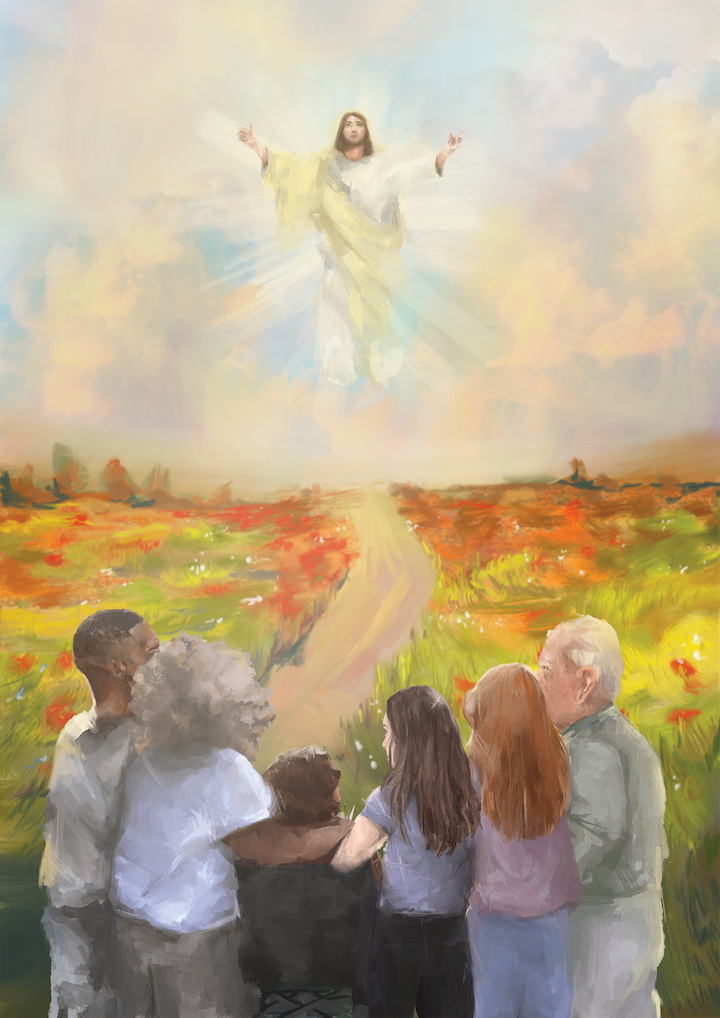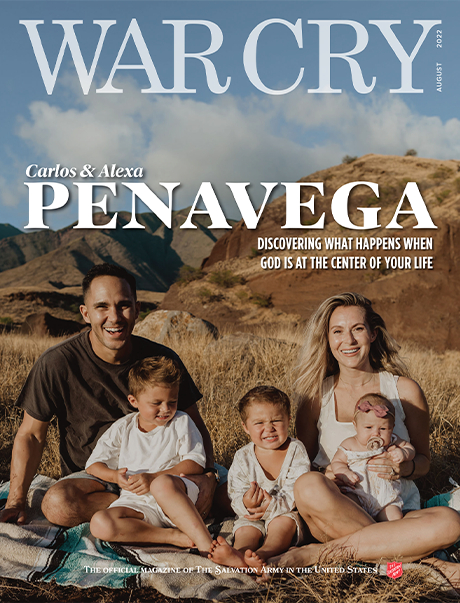Reaching The “New Marginalized”
"I believe Christians will understand that we are members of one human race and that we need to love one another regardless of our racial and ethnic differences."
Unlike other church founders, William Booth had a unique calling from God to reach out to the marginalized of his time. One of his closest advisors, Commissioner George Scott Railton, carried William Booth’s calling to America as he landed in New York City in 1880, and courageously declared, “…The Salvation Army would be the only white people in whose company, whose platforms, whose operations, colored people have the same welcome as others…”1 Moreover, Commissioner Frank Smith, then the National Commander in America, pursued William Booth’s divine mission to the marginalized as he stated in his 1885 War Cry article, “Our colored brethren have been very much wronged, the victims trampled upon…We of The Salvation Army have a holy ambition to be among the first Christian community of America who will faithfully and wholly break down the wall of partition…”2
Today, The Salvation Army is challenged to carry Booth’s mission to “new marginalized,” a term that I will use to refer to the immigrants.
The inexorable influx of immigrants to North America compels The Salvation Army and the Church at large to shift from monoethnic to multiethnic churches. Richard Hardison pointed out that the demographic trends suggest the “mono-ethnic problem” will be accentuated with time because America is increasingly becoming ethnically diverse.
There are several statistical reports to show an increase in minority populations. Hardison also indicated that “America is on track to become a ‘majority-minority’ nation by 2043.”3 Andrew Hardy and Dan Yarnell pointed out “by planting multi-ethnic churches and forming multicultural partnerships, God’s kingdom of people from every culture and nation will begin to emerge and impact our divided society.”4
Multiethnic church: A biblical perspective.
The book of Acts shares ample evidence that the early church was multiethnic. Jerusalem was a multiethnic city in which people from various nations lived and conducted business. Among some of the ethnic groups described in the Bible were the Parthians, Medes, and Elamites; people from Mesopotamia, Judea, and Cappadocia, Pontus and Asia, Phrygia and Pamphylia, Egypt and Libya; visitors from Rome (both Jews and converts to Judaism); Cretes and Arabs (Acts 2:9-11). The fact that God enabled the disciples to speak in languages that foreigners residing in Jerusalem on the day of Pentecost could understand is clear evidence of the presence of other nationalities in this city. Furthermore, the fact that people heard the Gospel proclaimed in their languages justifies the fact that many early converts were non-Jews. Moreover, the missionary-minded church of Antioch comprised a multicultural staff that included Barnabas, Simeon, who was black, Lucius of Cyrene, who was Greek, Manaen, a Jew, and Saul (Acts 13:1-3). Paul’s consistent effort to reconcile the Jews and the Gentiles is a demonstration of the Gospel of unity in diversity, which transformed his own life.
Oneness in Christ is the goal that all church planters should pursue as they build churches to meet the needs of the members of our global village. The Apostle Paul, the church planter par excellence, emphasized the “oneness in Christ principle” as he pointed out in Ephesians 2:19–22:
“Consequently, you are no longer foreigners and aliens, but fellow citizens with God’s people and members of God’s household, built on the foundation of the apostles and prophets, with Christ Jesus Himself as the chief cornerstone. In him, the whole building is joined together and rises to become a holy temple in the Lord. And in him, you too are being built together to become a dwelling in which God lives by his Spirit.”
Christ’s will and prayer for God’s people is that they may be united in Him, as He is united in the Father.
One may conclude that the New Testament congregation remained largely multiethnic in its composition, despite some incidents of discrimination between the Jews, the Samaritans, and the Gentiles. Though there were other incidents of discrimination within the early church, God used two of Jesus’ influential and well-respected disciples, Peter in Acts 10, and Paul in Gal. 2:11-21, to rebuke discrimination and encourage unity within the Body of Christ (1 Cor. 9:20-22 & 12:12-13; Eph. 2:19 & 2:22-23). There is more situational and biblical evidence that God reprimanded discrimination (Numbers 12; Luke 9:51-56, Gal. 2:11-12) and that His multiethnic/racial people worshiped together through the multicultural leadership of the apostles, and under the Lordship of Christ.
In Acts 1:8, Jesus not only promised the baptism of the Holy Spirit to His disciples, but He also gave them a global vision to be His witnesses in Jerusalem, and in all Judea and Samaria, and to the ends of the earth. Thanks to global migration, the inhabitants of the world are within our reach and can worship in our corps. Therefore, building a church/corps with the sole purpose of reaching people of one’s ethnic group is a violation of God’s most important commission in His global plan of salvation.
Multiethnic church
Jacob Dunlow stated that several distinguished scholars, including DeYoung, Emerson, Yancey, and Chai, have defined a multiethnic church as “a diverse church in which one ethnic or racial group needs to make up no more than 80% of the congregation. For a church to be multiethnic, at least 20% of the church members must be of a different ethnic group than the rest.” Morales shared four characteristics of a multiethnic church including counteracting segregation, cultivating an identity of inclusion, implementing a multilingual platform, and creating a multiethnic and culturally intelligent Leadership Team.5
Multiethnic corps
I would redefine a “multiethnic church/corps” as a congregation in which the majority of the members tend to be open-minded, and culturally responsive, and which provides culturally responsive worship and preaching. Drakeford indicated that cultural responsiveness is “the ability to learn from and relate respectfully with people of your own culture as well as those from other cultures.”6
The Compton Corps, in the Western Territory, is an example of a multiethnic corps. According to Major Gwendolyn Jones, who served together with her husband at the Compton Corps two different times, and now serves the third time in post-retirement service, the population of this corps consists of 75% Latino, 20% Black, and 5% South Pacific. She points out that, “We call our corps a bi-language corps and do everything in two languages, English and Spanish, but we also have a third language group that is Samoan.”
In the Southern Territory, the Houston International Corps is, perhaps, the best model of multiethnic corps within The Salvation Army in the United States. In the Eastern Territory, Harlem Temple Corps, the Hempstead, NY Corps and many others are considered multiethnic corps. I attended Hempstead corps for two months and found that this Corps gathered Anglos, Hispanics from different nationalities, Caribbeans, African Americans, Nigerians, Haitians, and Indians. From 2018 to 2020, the corps was under the leadership of a Black officer married to an Anglo officer; now the corps is under the leadership of a Korean couple.
To be a genuine multiethnic corps, the members need to develop “meaningful relationship” that enables them to worship and fellowship in one accord. I use the term “meaningful relationship” to connote a relationship that not only accepts and accommodates someone from another ethnic group but also recognizes, embraces, appreciates, and respects that person, treating him or her as an equal. Meaningful relationships occur when corps members treat each other like family members. In other words, members share each other’s burdens, joy, hardships, and so forth.
Reaching the “New Marginalized”
Today, immigrants represent “the new marginalized.” The Nigerians, Koreans, Asians, Jamaicans, Hispanics, and people from other nations can be found in our backyards. They are riding on the same trains and buses that we take to work, schools, and supermarkets. They are working side by side with us in our companies and sending their children to our public schools. Hence, The Salvation Army corps that are ministering in multiethnic communities need to reflect their communities, while those that are ministering within homogeneous communities need to prepare to welcome culturally diverse people who are slowly but surely moving into their communities.
As The Salvation Army endeavors to embrace “The New Marginalized” into its corps fellowship, the Army must continue to reflect Booth’s unique calling to the despised, the distressed and the disinherited of our modern society. Moreover, while the Army culture needs to be contextualized within the post-modern milieu, it must unswervingly keep its doctrines and theology. It is interesting to note that while The Salvation Army worship expression is contextualized throughout the continents of Africa and Asia, and in Latin America, and the Caribbean, its religious culture (symbols, uniform, music, terminology, soldier’s enrollment, etc.) as well as its doctrines and theology remain intact.
In preparation for the inexorable influx of immigrants to our country and communities, training entailing a curriculum in multicultural ministries within The Salvation Army context will prepare future officers and those in the field to minister effectively within our rapidly growing multicultural society. The awareness of our internationalism will develop a global mindset among officers and soldiers as well as open their hearts to embrace the new marginalized following Booth’s divine calling.
Excerpted from article by Daniel N. Diakanwa entitled “From Homogeneous to Multiethnic Corps: Reaching the ‘New Marginalized’ of Our Socieity” in the May 2021 edition of “Word & Deed, A Journal of Salvation Army Theology and Ministry.” The author’s full article provides an analysis of church and corps models in the U.S. as they relate to multicultural realities, and suggestions for achieving both continuity and innovation in following a multiethnic model. To subscribe to “Word & Deed,” call 1-800-SAL-ARMY (1-800-725-2769) or email subscriptions@usn.salvationarmy.org.
Illustration by Sofia Diaz







